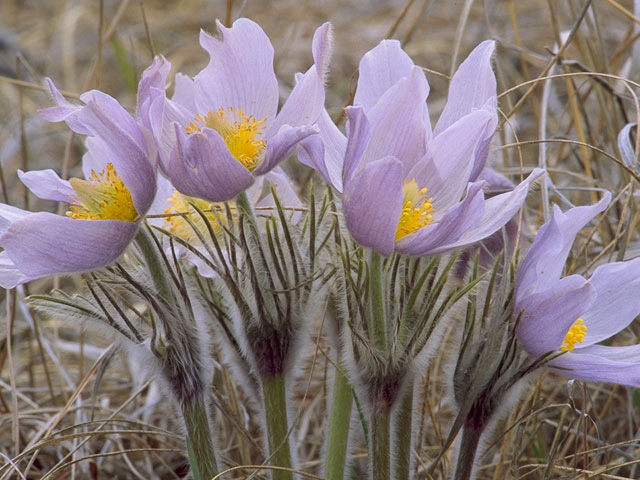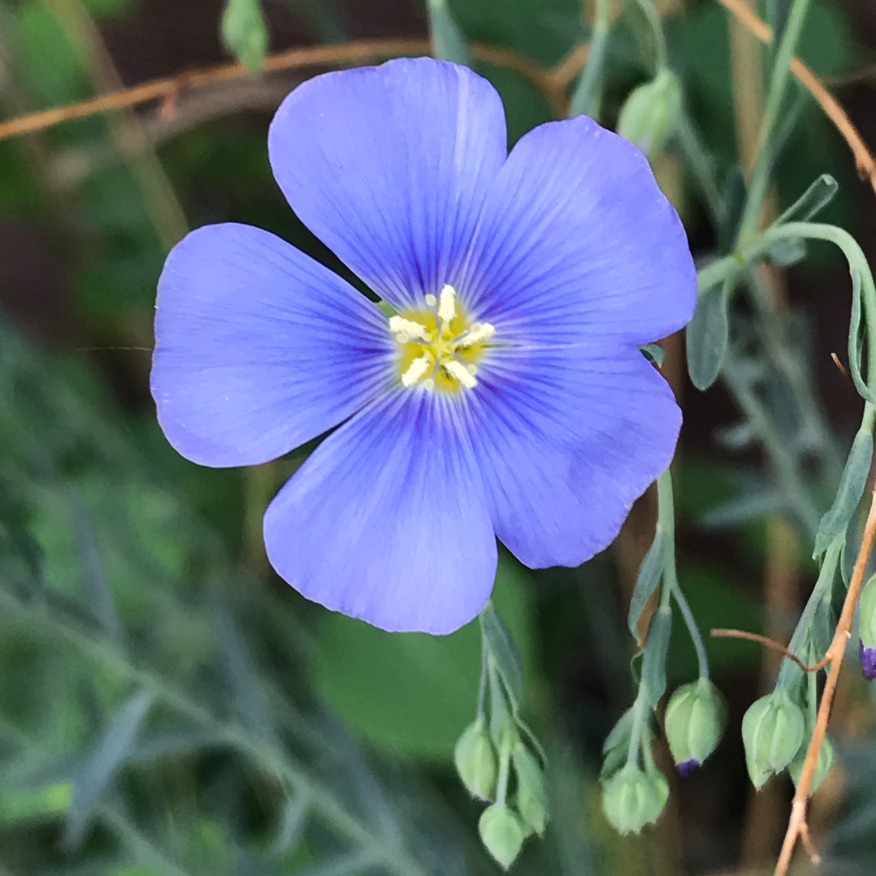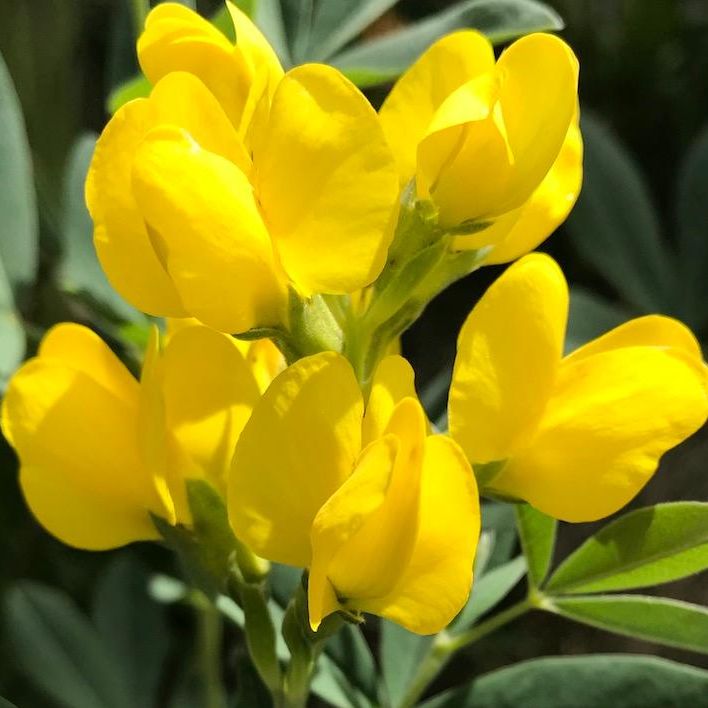By Michelle Kinshella
Dreary Old Man Winter is still upon us, but soon our calendar will be telling us it’s Spring—the gardener’s favorite time of year! “Conventional” gardeners anticipate their tulips and crocuses, but we native plant lovers have so much more to look forward to, especially if you’re willing to venture forth on a hike. My favorite springtime hikes to see the early beauties are William F Hayden Green Mountain Park (Lakewood) and Castlewood Canyon (Franktown).

At Castlewood Canyon you are likely to come across a favorite early bloomer, the Pasque Flower (Pulsatilla patens). Covered in hairs like a fur coat to keep it warm in the event of a Spring snowstorm, the Pasque Flower’s purple or blue petals with bright yellow stamens reminds one of an Easter egg. And the joy of finding an Easter egg is similar to the joy experienced when you spot one of these gems on your trek. They typically prefer some shade, so you may have to look closely to find one (available for your viewing pleasure from April to June). In your garden, you can plant them under a late-leafing out deciduous tree, as they bloom before the shade comes.

Hayden Green Mountain, however, is the place to go if you seek the sun-loving early native flowers. There you are likely to come across my other favorite: the Star Lily (Leucocrinum montanum). Blooming in a basal rosette of narrow, grass-like leaves, this distinctive little lily is unmistakable. According to the Ladybird Johnson Wildflower Center website, this is the only species of its kind. Like the fading stars of a fireworks outburst, the Star Lily lives up to its name. They bloom from April to June.

A March bloomer is the Easter Daisy (Townsendia hookeri or T exscapa). Its solitary flower head, composed of numerous white to pinkish petals surrounding a yellow center, is basically stemless. They form a low mound, which is a successful strategy that helps to maximize heat retention during colder periods.

Also keep an eye out for Blue Flax (Linum lewisii). It typically shows up in April and can last until September through October. With a blue flower and wispy foliage, it can be seen along the E-470 bike trail, and can get as tall as two feet, with tiny one-inch flowers. In your garden, it is easily one of the showiest native wildflowers in spring with its bright blue color.

Arriving in May, Golden Banner (Thermopsis divaracarpa) has bright yellow-as-sunshine flowers that make you happy just looking at it. A member of the Fabaceae family, Golden Banner can be found in part-shade environments.

And finally, the list would not be complete without the mention of Rocky Mountain Spring Beauties (Claytoni lanceolata var. rosea). This native flower only grows up to 6-inches tall, with blooms of white, pink and red. According to the Lady Bird Wildflower Center website (see link above), they might be seen as early as March, and like to grow on hillsides and mesas of montane ponderosa and Chihuahuan pine and oak belts.
Curious to learn more about transforming your garden into a habitat with Colorado native wildflowers, grasses, shrubs, and trees? Check out our native gardening toolkit, register for an upcoming event, subscribe to our newsletter, and/or become a member – if you’re not one already!
